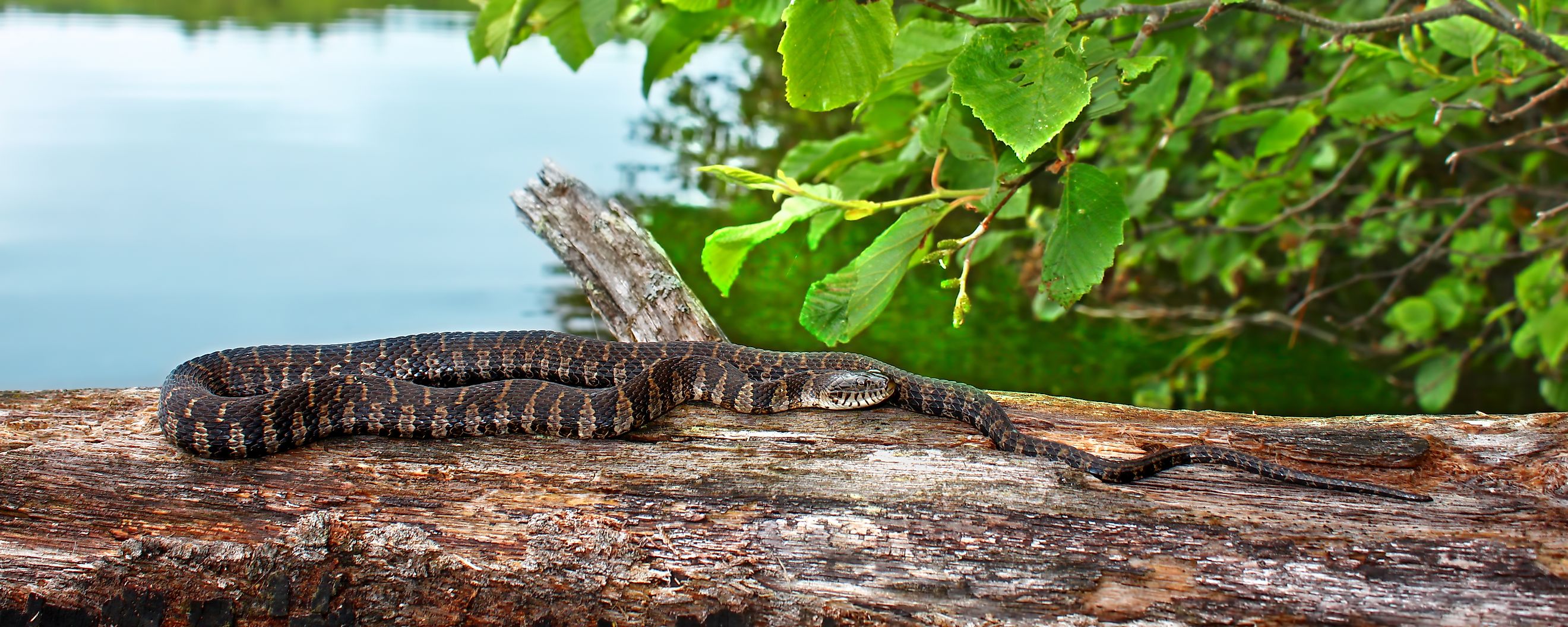
The Most Snake Infested Lakes in Ohio
Ohio, a state in the Midwestern United States, is a wellspring of tourist activity and outdoor charm. That said, hidden behind the thick foliage and often found in bodies of water, the state is also a hub for many snake species. In total, Ohio has over 30 species, out of which about 25 are native to the region. In addition to this, three species are confirmed to be venomous, so visitors should always roam around the wilderness with caution. However, many people overlook the presence of snakes in lakes, and as Ohio is home to seven species of water-loving snakes, this is something everyone should consider. So, here are some of the most snake-infested lakes in the Bullseye State.
Lake Erie
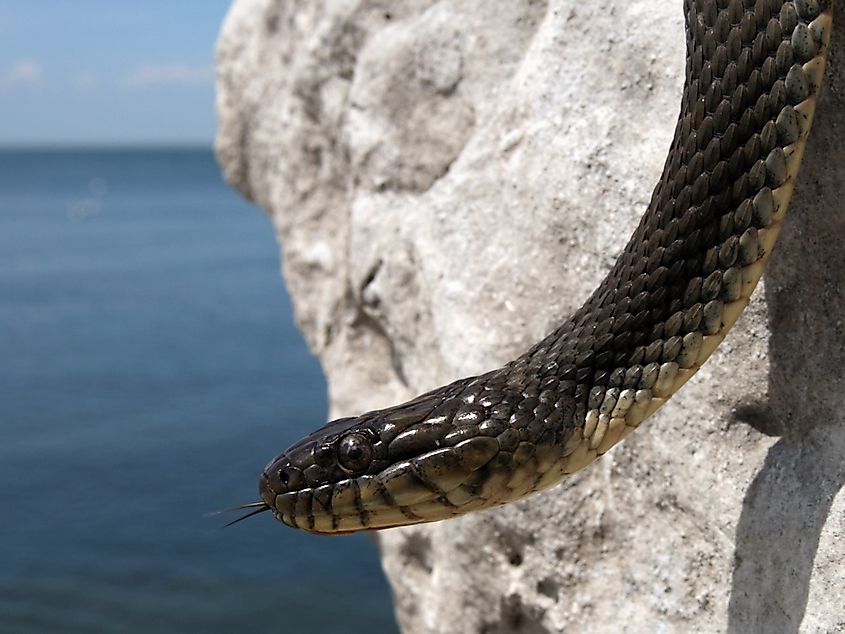
Part of the Great Lakes in North America, Lake Erie is a massive body of water full of opportunity. Its total surface area is 9,910 square miles (25,700 sq km.), making it the fourth largest of the five Great Lakes. Ohio boasts approximately 312 miles of shoreline with the lake, which is a blast for locals and tourists. This area is home to cities like Cleveland and Sandusky, where one can enjoy fishing, swimming, boating, and plenty of lakeside activities.
Along with the fun, Lake Erie is also a hub of wildlife, and snakes are a common sight. Four species of water snakes live in the lake, including the eastern garter snake and the common watersnake. However, the most popular of the bunch is the Lake Erie watersnake, a species named after the lake as it is primarily found on its offshore island. This snake can reach lengths of up to 28 inches (71 cm) and boasts a dark grey appearance. Thankfully, the Lake Erie watersnake and other Lake Erie species are non-venomous, so visitors can roam without too much worry.
Pymatuning Reservoir
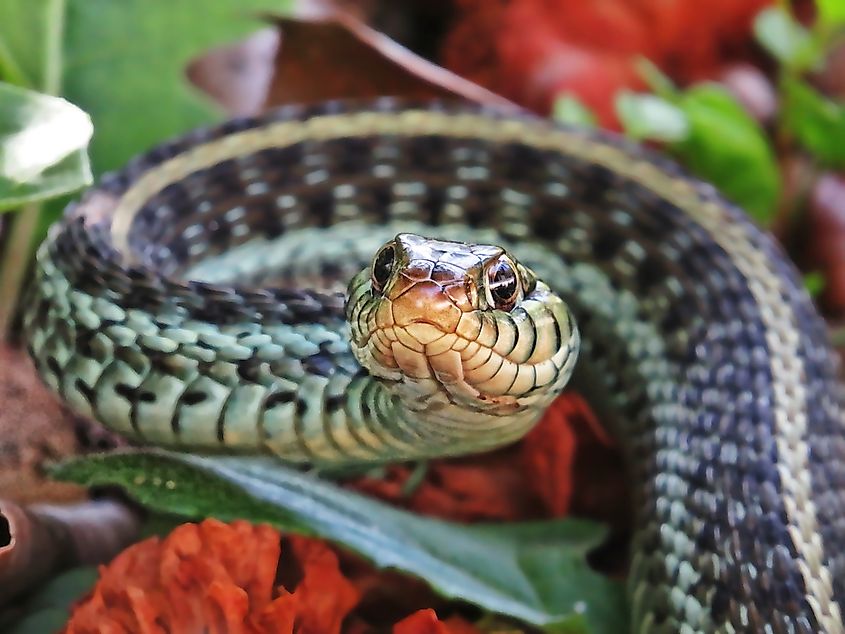
The Pymatuning Reservoir is a man-made lake located in both Pennsylvania and Ohio. The land was once a large swamp until a dam on the Shenango River was constructed, creating this reservoir. Today, it is one of the largest bodies of water in Ohio, with a surface area of approximately 17,088 acres. In addition to the lake, the area also boasts two state parks, both named “Pymatuning State Park” in Pennsylvania and Ohio. The Ohio side park is a hotspot for tourists thanks to its diversity of wilderness and wildlife.
Among the thousands of geese, ducks, foxes, and bears that call the lake and its shoreline home, snakes are not far behind. The most common species in the region is the common watersnake. This large and non-venomous snake is found in many regions across North America. The good part for humans is that it is not harmful and will often try to flee from interactions. Further inland into the Pymatuning State Park, the common garter snake and gray rat snake are also occasional sightings.
Indian Lake

A 4-hour drive southwest of the Pymatuning Reservoir is Indian Lake, another lovely reservoir frequented by tourists. This lake spans over 5,000 acres and, like the previous entry, has tons of life along its shoreline. This is because the towns of Avondale, Lakeview, Russells Point, and Orchard Island all surround this quaint lake. Moreover, the northwestern side is home to the 800-acre Indian Lake State Park, which promotes outdoor activities along the water. That said, before going in or around this seemingly safe lake, it is essential to learn about the snakes in it.
As with many lakes in Ohio, the common watersnake is the most common species. These snakes are regularly spotted in shallow waters wrapped around logs, leaves, and rocks near the shoreline. While they are not venomous, it is important to give them a wide berth, as an adult’s bite can be very painful.
Grand Lake St. Mary
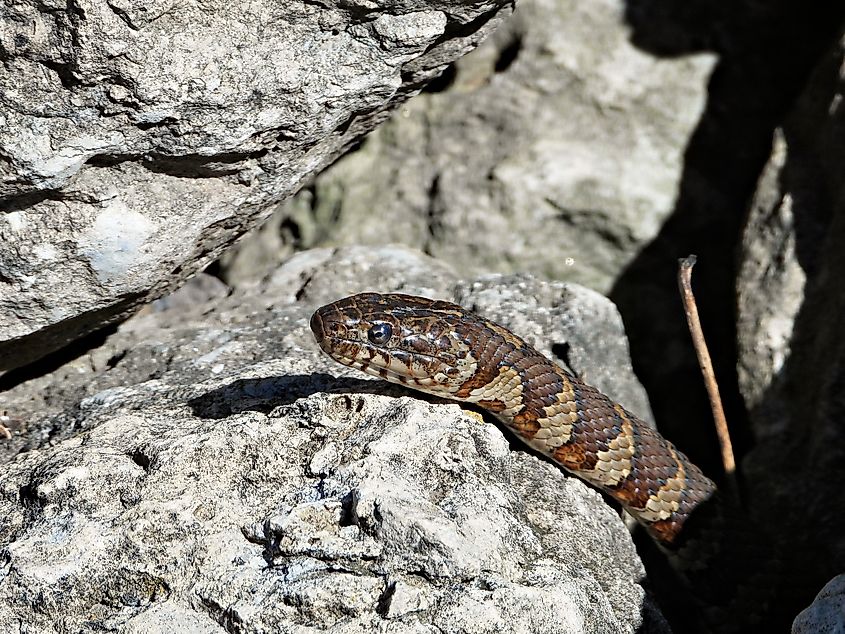
As the name suggests, Grand Lake St. Mary is a lake full of grandeur, boasting an area of over 13,000 acres. It is known for its year-round recreation opportunities, best available at the Grand Lake St. Marys State Park. Here, visitors can go fishing, boating, swimming, and hunting, among many other activities. While there aren’t many species of snakes in this lake, making it safe at first glance, there is a catch.
Similar to Indian Lake, Grand Lake St. Mary is home to only the common watersnake; however, there are a lot of them. Sightings are quite common, and these dark snakes can often cause a fright for happy tourists. Due to this, parents should stay alert and not let kids wander too far into the water alone. Thankfully, for those afraid of snakes, the park offers many picnic areas, camping sites, and biking trails.
Mosquito Creek Lake
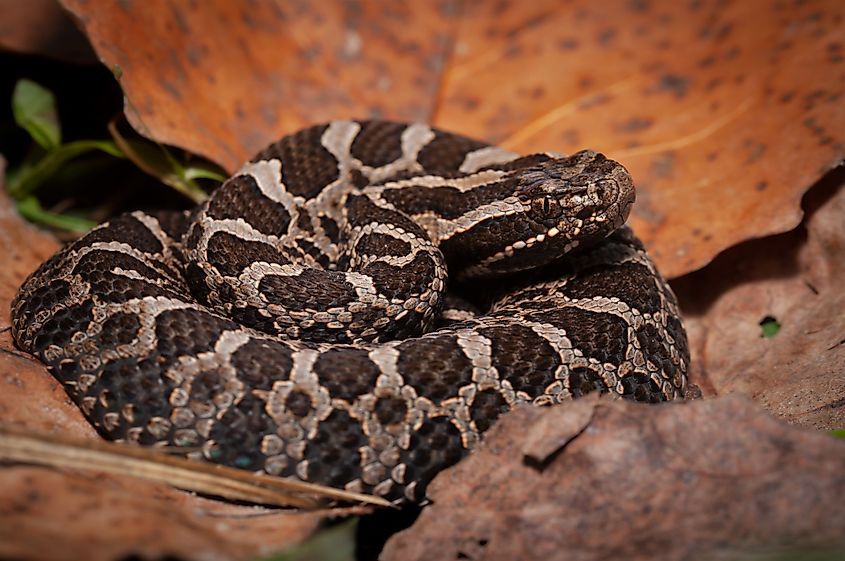
Getting its name from its primary inflow and outflow, Mosquito Creek, the Mosquito Creek Lake is a scenic body of water in northeast Ohio. It was formed in the 1940s by the construction of a dam and today spans nearly 8,000 acres. Moreover, the lakeshore is home to Mosquito Lake State Park, which is a popular destination for outdoor enthusiasts, offering camping, boating, swimming, and more. One popular activity here is fishing, as the lake is home to an abundance of bluegill, channel catfish, northern pike, and walleye.
While fishing, anglers should keep note of the many snakes that also call this lake and park home. Along with the common watersnake, a harmless creature, the eastern Massasauga rattlesnake is also an occasional sighting here. This species of rattlesnake is not quite large, reaching a length of 30 inches (75 cm), and boasts a unique color pattern of grey with prominent black spots along its back. However, it is one of the few venomous snakes in the region. Its venom is cytotoxic and can destroy tissue with special digestive enzymes. Although the snake avoids conflict, always keep an eye out for the grey and black pattern when out and about in Mosquito Creek Lake.
Stay Informed and Safe While Enjoying Ohio's Lakes
Whether it is the massive Lake Erie and its grandeur or the quaint Indian Lake known for its relaxing environment, these lakes are popular with outdoors people. Moreover, each is home to many snakes, whether the common watersnake or the illusive eastern Massasauga rattlesnake. While some are cute critters that offer a unique experience, others are best avoided due to their toxic venom. To this end, it is important for tourists and locals to understand which species are safe and how to interact with them in the wild.











